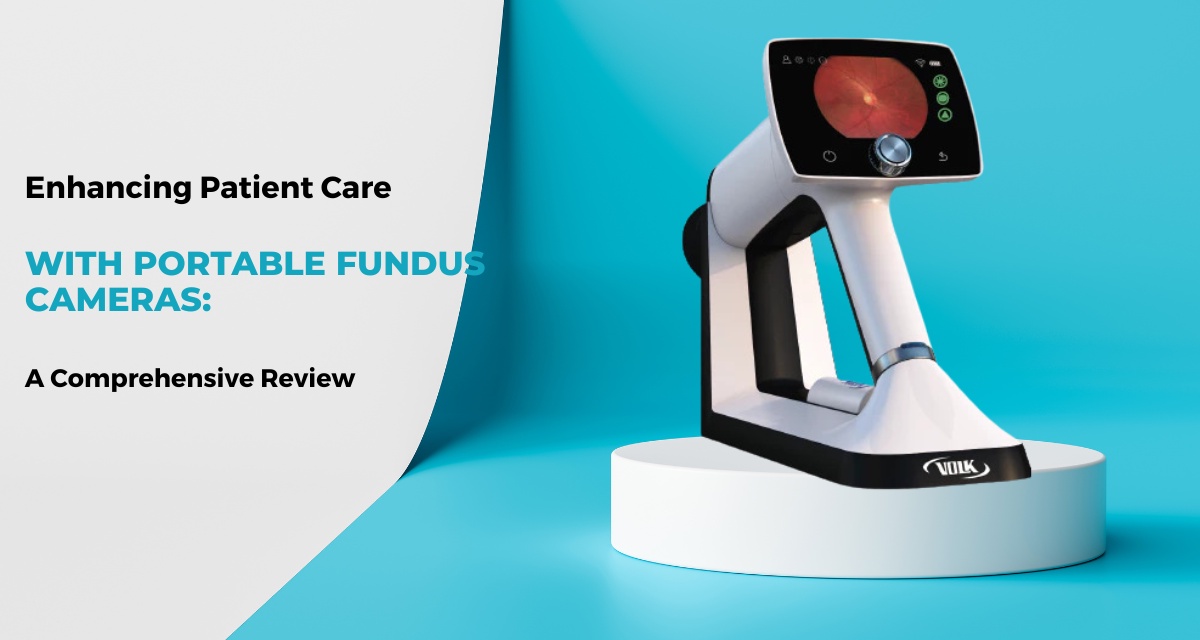In the ever-evolving landscape of healthcare technology, portable fundus cameras are emerging as valuable tools that significantly enhance patient care in the field of ophthalmology. These compact devices have revolutionized the way eye care professionals diagnose and manage various retinal conditions. In this comprehensive review, we will explore the remarkable capabilities of portable fundus cameras, their impact on patient care, and the key features that make them indispensable in modern ophthalmology practice.
The Evolution of Portable Fundus Cameras:
Portable fundus cameras have come a long way since their inception. Initially designed to address the challenges of remote or underserved areas, these devices have evolved into powerful, user-friendly tools that provide high-quality retinal imaging. The rapid advancements in technology have made it possible to capture detailed images of the retina with ease, even in non-clinical settings.
Advantages of Portable Fundus Cameras:
1. Accessibility:
One of the most significant advantages of portable fundus cameras is their accessibility. These devices allow eye care professionals to reach patients beyond traditional clinical environments. Whether in a remote village, a nursing home, or a patient's home, portable fundus cameras bring retinal imaging to the patient, reducing barriers to early diagnosis and treatment.
2. Early Detection:
Early detection of retinal conditions is crucial for effective treatment. Portable fundus cameras enable quick and efficient screening, helping identify issues such as diabetic retinopathy, glaucoma, and macular degeneration in their early stages. Timely intervention can prevent vision loss and improve patient outcomes.
3. Patient Comfort:
Many patients find traditional fundus cameras intimidating, with their bulky equipment and bright flashes. Portable fundus cameras offer a more comfortable experience. They are lightweight, non-invasive, and require minimal pupil dilation, making the process less intimidating for patients, especially children and the elderly.
4. Teleophthalmology:
In an era marked by the need for remote healthcare, portable fundus cameras play a pivotal role in teleophthalmology. These devices can capture high-resolution images that can be instantly shared with specialists, facilitating remote consultations and diagnosis. This is particularly valuable in situations where travel to a specialist's office is challenging.
Key Features to Consider:
When choosing a portable fundus camera, several features should be considered:
- Image Quality: Look for devices that provide crisp, high-resolution images of the retina, ensuring accurate diagnosis.
- Ease of Use: User-friendly interfaces and automated features simplify the imaging process, reducing the need for extensive training.
- Connectivity: Devices with built-in Wi-Fi or USB connectivity enable seamless data transfer and integration with electronic health records (EHRs).
- Battery Life: Longer battery life ensures extended use during clinical visits or fieldwork.
- Durability: Robust construction is essential for devices that may be used in various environments.
Conclusion:
Portable fundus cameras have reshaped the landscape of ophthalmic care by increasing accessibility, enabling early detection, and enhancing patient comfort. Their role in teleophthalmology is more critical than ever, offering a lifeline for patients in remote areas and those unable to visit a clinic.
As technology continues to advance, these devices will only become more integral to modern eye care. Ophthalmologists and optometrists should consider incorporating portable fundus cameras into their practice to provide the best possible care to their patients.
In conclusion, the comprehensive review of portable fundus cameras presented here highlights their transformative impact on patient care, making them an indispensable tool in the field of ophthalmology. Embracing this technology is not just about convenience; it's about improving the quality of life for countless individuals by preserving their precious eyesight.


No comments yet